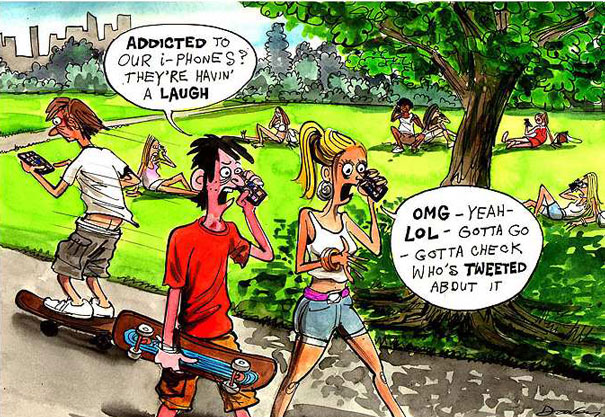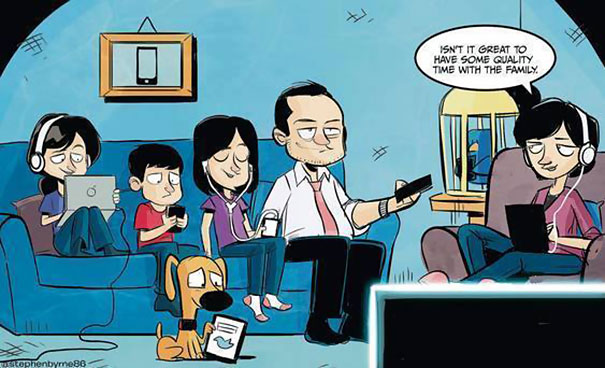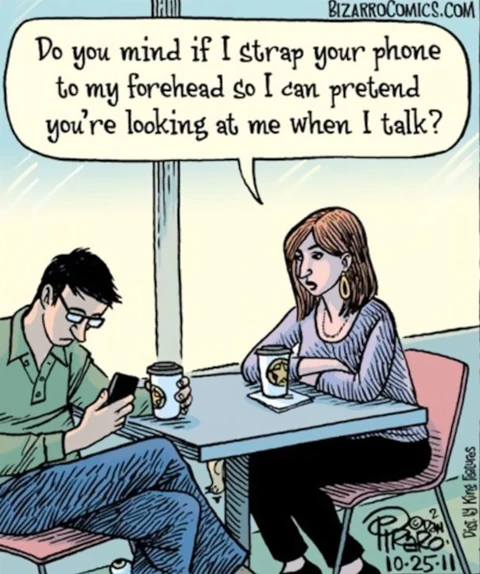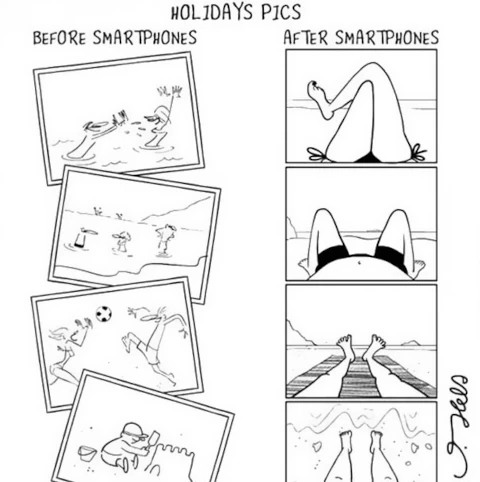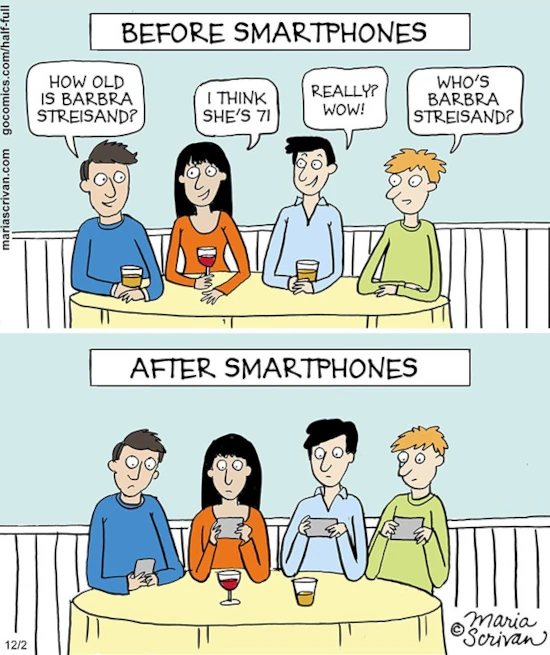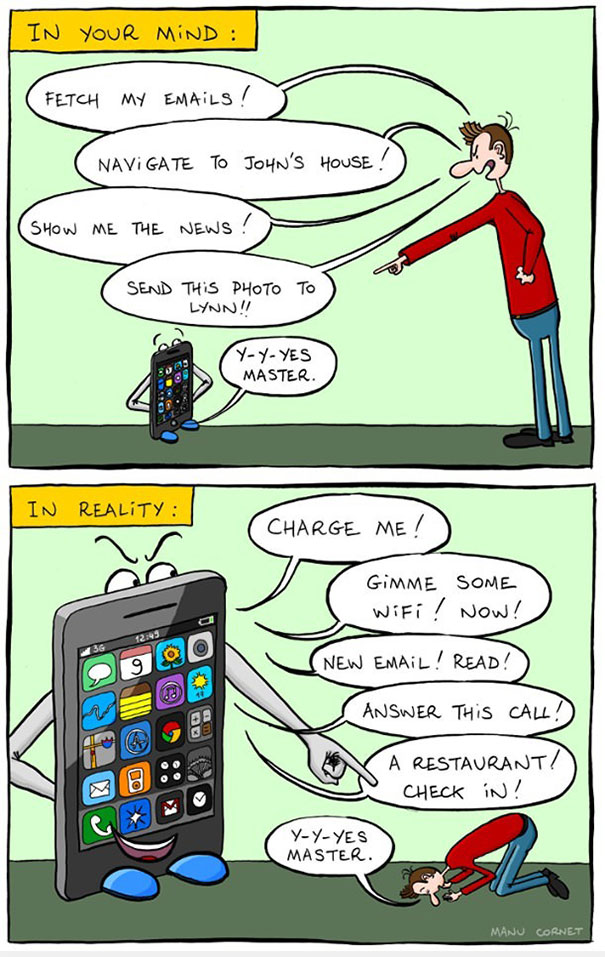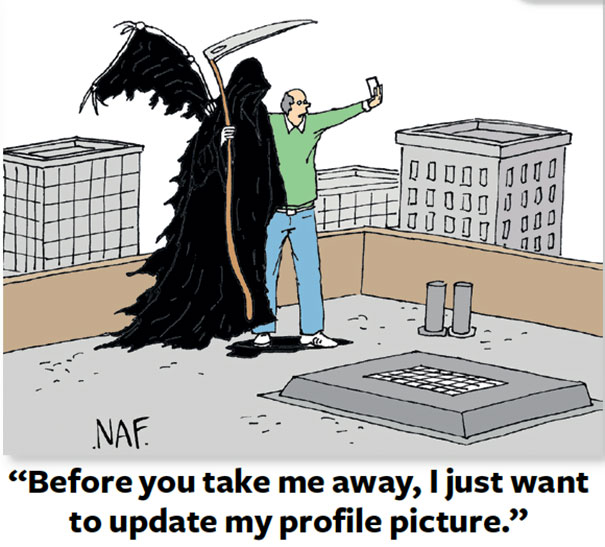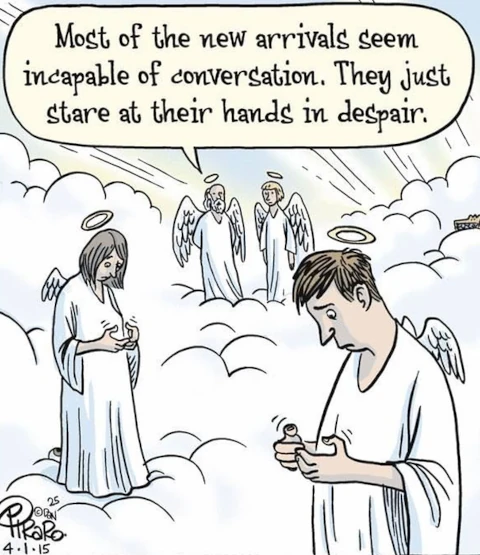
Are you feeling inundated with messages, notifications, and distractions?
You can regain your concentration without completely cutting off from technology.
Do you have command over your smartphone or does it have command over you?
It can be hard to distinguish at times. One moment you may be utilising FaceTime to converse with your loved ones or discussing your preferred TV program on Twitter. Then again, you find yourself trapped in a never-ending cycle of scrolling through TikTok or constantly checking your email notifications, causing you to lose focus on other tasks, and share your time with your loved ones or friends around you.
According to multiple psychologists and whistleblowers from Silicon Valley, we are intentionally made to feel unable to disconnect from our technology.
According to a recent survey by research firm GWI, individuals of all age groups are actively trying to reduce their reliance on smartphones. This is particularly evident among younger generations, with 25% of gen Z and 23% of millennials reporting that they have decreased their usage of social media in order to better manage their mental well-being.
According to recent research, not all technology usage has the same impact. Simply browsing through Facebook and measuring one’s life against others’ has never been a formula for contentment. However, actively utilising Twitter for social support can have positive effects.
Rather than making well-meaning yet unfeasible resolutions or enrolling in a radical “digital cleanse”, consider adjusting the preferences on certain apps to reduce the amount of time spent on them.
Let Us Find Out The Best Strategies In Smartphone Usage

1. The Twitter Platform
Silencing Individuals and Topics
To improve your Twitter experience, you have the option to mute any content you do not wish to see, such as diet trends, Black Friday promotions, or movies spoilers. This can easily be done – and undone. To mute individuals, simply click on the three dots on their profile and select “mute”. Their tweets will no longer appear on your feed, but they will not be notified. For words, phrases, movie titles, or anything else, go to “settings”, then “privacy and safety”, click on “mute and block”, and finally, select the “+” sign to add any content you wish to block.
2. WhatsApp
Turn off read receipts
The act of sending a message and not receiving a response can cause a lot of anxiety for many individuals. Similarly, receiving a message and feeling obligated to respond immediately can be overwhelming. By disabling read receipts, these stressors and worries can be alleviated. Simply go to “settings”, then “account”, choose “privacy”, and switch off read receipts. This will prevent you from seeing the anxiety-inducing blue check marks, and it will also hide them from the recipients of your messages.
3. Facebook
Eliminate your news feed
The news feed has had a negative impact on modern democracy, but if you are unable to completely detach from it, the next best option is to remove the Facebook app from your mobile device and only access it through your desktop. This will help reduce the overwhelming flow of random memes and questionable political content. You can also use a browser extension, such as “News Feed Eradicator” for Chrome, which replaces the news feed with a motivational quote.

4. Instagram
Conceal your number of likes
As a self-assured and resilient person, you’re not worried about the number of “likes” your recent post receives, but you may know someone who is. Here’s a solution: remove the visibility of the like count. Simply click on the three dots in the top right corner of a post and choose “hide like count”.
Now, when you view who has liked a photo, only you can see the actual number of likes. Want to take it a step further? Access “settings”, click on “privacy”, select “posts”, and switch on the option to “hide like and view counts”. This will make Instagram feel less like a competition for popularity.
5. Video-sharing Platform
Eliminate recommended videos
Remove the YouTube app from your mobile device and commit to only using it on your computer. Then, you can install a browser extension for better control. For instance, “Improve YouTube” is a Chrome extension that offers several features to enhance your viewing experience, the most useful being the ability to hide the “related videos” sidebar. This feature of YouTube can often consume more of your time than intended by leading you down a video-watching rabbit hole.
6. The Popular App TikTok
Establish a Time Limit
TikTok can give the impression of being a parallel universe. You may believe you’ve only spent five minutes watching videos of canines wearing hats, but without realizing it, an entire hour has gone by.
Take charge of your viewing by setting a time limit through the app itself. Access “settings”, “digital wellbeing”, and then “screen-time management” to choose a daily limit of 40, 60, 90, or 120 minutes. Once your time is up, you will be required to enter a passcode in order to continue using TikTok, which should serve as a reminder to focus on something else.
7. Alerts
Adopt a firm stance
Do you often find yourself distracted by unnecessary notifications lighting up your smartphone screen? Many apps have these notifications enabled by default. It’s important to consider if you truly want to constantly receive pings from social media platforms, old acquaintances, and pizza delivery companies. Most likely, the answer is no.
Instead, take the time to determine which notifications are actually necessary. Calendar reminders, for example, are important. But do you really need to know when someone you haven’t spoken to in 20 years “likes” one of your photos?
Interestingly, a 2021 study found that 89% of phone disruptions are caused by our own urge to check, not by notifications. By taking control of your notifications, you may be able to break the habit of constantly checking your phone – just stick with it for a few days and stay strong.
8. Electronic Mail
Make it a habit to check your emails twice daily. There are numerous techniques, such as the zero-inbox approach or organising emails with colorful folders or filters, that claim to reduce stress from your inbox.
A simple new email habit is recommended by Tim Ferriss, the author of The 4-Hour Work week. This productivity tip suggests checking your emails only once or twice a day, with the exception of urgent matters.
To make this easier, turn off email notifications and set a reminder to check your emails. You can also schedule emails to be sent at different times to avoid overwhelming your inbox.
Additionally, consider setting an autoreply to inform senders of your email checking method and that immediate responses should not be expected.
9. LinkedIn
Avoid annoying individuals
LinkedIn offers a helpful function that enables you to stop following a person to avoid seeing their posts. Despite many users being aware of this feature, it is not utilised frequently.
If someone starts to boast about their recent job advancement, Ted talk, or number of Substack followers on LinkedIn, it may be wise to unfollow them.
Unfollowing is a simpler and less confrontational option compared to unfriending or removing them, making it a suitable choice for coworkers whom you do not wish to offend – as they will not be notified of being unfollowed.
10. Messaging Platform
Remove your availability
Get rid of the green dot that appears next to your name in Messenger, indicating to all your contacts that you are currently online. The only time this feature may come in handy is on rare occasions, but for the most part, it’s like having a neon sign above your head that says “I’m available, please message me.”
To change this, go to Messenger, click on your profile, choose “active status,” and disable this feature.
11. Social Media
Limit your scrolling time
Social media can be a major time-drain and a source of distraction. To regain control over your online habits, consider setting a specific time limit for scrolling through your feeds. This can help prevent mindless browsing and ensure that you’re using social media intentionally.
You can use apps or built-in features on platforms like Instagram and Facebook to set reminders or even temporarily disable access after reaching your allotted time.
By being mindful of your social media usage, you can free up more time for meaningful activities and reduce the urge to constantly check your phone.
12. App Notifications
Customise your app notifications
Take a few minutes to review and customise your app notifications to minimise distractions. Determine which apps truly require immediate attention and disable notifications for the rest.
By doing this, you’ll reduce the constant interruptions and be able to focus on tasks without being pulled away by unnecessary alerts. Remember to prioritise notifications that are essential for your work or personal life, and consider setting specific times to check non-urgent notifications instead of being constantly bombarded throughout the day.
This simple adjustment can greatly improve your productivity and help you regain control over your digital life.
13. Digital Detox
Plan regular digital detoxes
In today’s hyperconnected world, it’s important to take breaks from technology to recharge and maintain a healthy balance. Consider scheduling regular digital detoxes where you disconnect from screens and engage in offline activities.
This could be a day each week or a longer period, such as a weekend or vacation, where you intentionally limit your use of electronic devices. Use this time to connect with nature, spend quality time with loved ones, or pursue hobbies that don’t involve screens.
By incorporating regular digital detoxes into your routine, you’ll cultivate a healthier relationship with technology and reduce the dependency on constant digital stimulation.
Conclusion
The advancement of technology has significantly enhanced our daily lives, from curing once-incurable diseases to exploring outer space. It is undeniable that living without technology would be nearly impossible.
However, along with its convenience, technology has also caused various social problems, with smartphone addiction being the most prevalent. While cell phones have allowed us to be more connected than ever, disconnecting has become more difficult.
Managing smartphone usage smartly is essential for maintaining a healthy and balanced lifestyle in today’s digital age. By incorporating the following strategies, individuals can effectively harness the benefits of smartphones while mitigating potential drawbacks:
Setting Boundaries and Limits
- Establishing Usage Limits: Setting specific time limits for daily smartphone usage can help individuals prevent excessive screen time.
- Designating Tech-Free Zones: Creating designated tech-free zones in living spaces, such as the dining area and bedroom, can promote healthier habits and reduce dependency on smartphones.
Practicing Mindful Usage
- Mindful Engagement: Encouraging mindful usage by being fully present during social interactions and activities, rather than being constantly distracted by the smartphone.
- Selective Notifications: Customising notification settings to reduce unnecessary distractions and interruptions, allowing for better focus on important tasks.
Utilising Productivity Tools
- Time Management Apps: Utilising productivity apps to schedule and manage smartphone usage, ensuring that time spent on the device is purposeful and productive.
- Digital Wellbeing Features: Take advantage of built-in digital well-being features on smartphones to track usage patterns and set goals for healthier screen time habits.
Prioritising Real-life Interactions
- Face-to-Face Communication: Prioritising face-to-face interactions over digital communication whenever possible to foster genuine connections and reduce reliance on virtual interactions.
- Balanced Work-Life Integration: Striking a balance between work-related smartphone usage and personal time, ensuring that the device does not encroach on quality leisure and relaxation.
Hope you liked this article. By implementing these strategies, hopefully, you can now navigate your smartphone usage smartly and mindfully, promoting overall well-being and a healthier relationship with technology.
Before you go, have a look at these:
Check out the article “Death Of Conversation: 57 Images Of How Smartphones Take Over Our Lives“, written by Julija Nėjė BoredPanda, who writes about the project by Babycakes Romero who depicts the humorous and not-so-humorous consequences of our addiction to social media.
Below are a few of the dark illustrations, although these comic strips may seem light-hearted, they shed light on serious issues that many of us are concerned about. Hopefully, you will not see yourself represented in these thought-provoking drawings.
Hope you liked this article. By implementing these strategies, hopefully, you can now navigate your smartphone usage smartly and mindfully, promoting overall well-being and a healthier relationship with technology.
On holiday…
Social life…
Who’s in control…
Married life…
Last wish…
In haven…
Affiliate Declaration:
The use of affiliate links on this website may result in earning a small commission for any purchases made, at no additional cost to you (the user). Please review our privacy and cookie policy, as well as our affiliate disclaimer.


